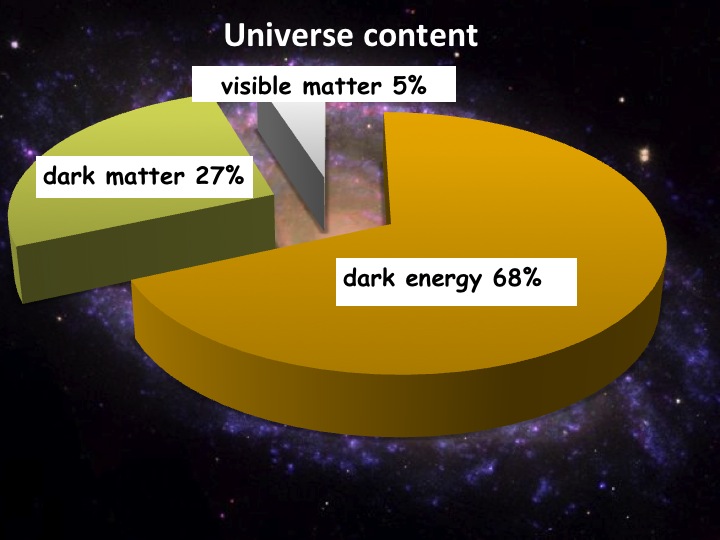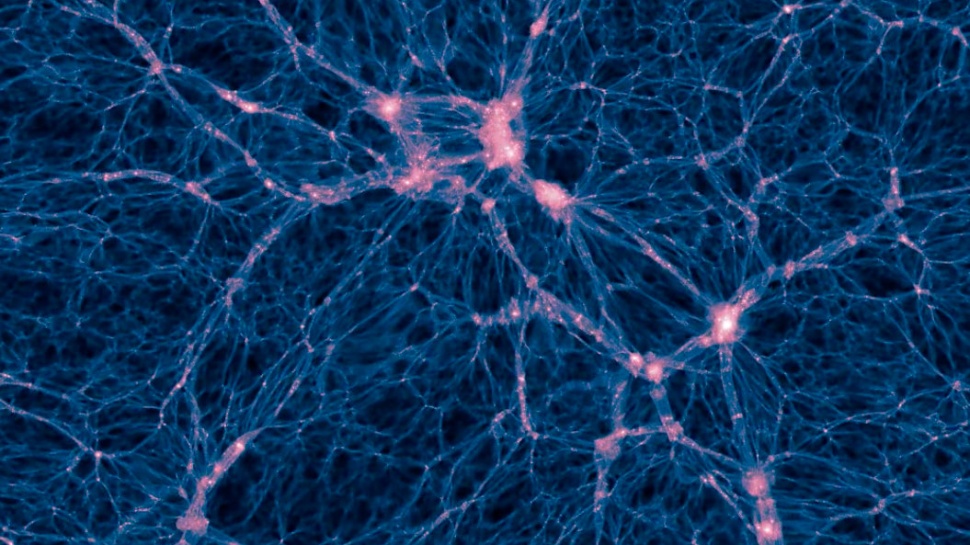What is Matter ?
Matter is a substance that has inertia and occupies physical space. According to modern physics, matter consists of various types of particles, each with mass and size.
The most familiar examples of material particles are the electron, the proton and the neutron. Combinations of these particles form atoms. There are more than 100 different kinds of atoms, each kind constituting a unique chemical element. A combination of atoms forms a molecule. Atoms and/or molecules can join together to form a compound.
Matter can exist in several states, also called phases. The three most common states are known as solid, liquid and gas. A single element or compound of matter might exist in more than one of the three states, depending on the temperature and pressure. Less familiar states of matter include plasma, foam and Bose-Einstein condensate. These states occur under special conditions.

What is Dark Matter ?
Dark matter is a hypothetical type of matter distinct from baryonic matter (ordinary matter such as protons and neutrons), neutrinos and dark energy.
Dark matter has never been directly observed; however, its existence would explain a number of otherwise puzzling astronomical observations. The name refers to the fact that it does not emit or interact with observable electromagnetic radiation, such as light, and is thus invisible to the entire electromagnetic spectrum.
Although dark matter has not been directly observed, its existence and properties are inferred from its gravitational effects such as the motions of baryonic matter, gravitational lensing, its influence on the universe's large-scale structure, on the formation of galaxies, and its effects on the cosmic microwave background.
The standard model of cosmology indicates that the total mass–energy of the universe contains 4.9% ordinary matter, 26.8% dark matter and 68.3% dark energy. Thus, dark matter constitutes 84.5% of total mass, while dark energy plus dark matter constitute 95.1% of total mass–energy content.
Mapping The Wobbles Broke Another Dark Matter Hypothesis
A shot in the dark
The wobbling that was observed by this study is a fairly mysterious phenomenon, which offers up its own questions. However, if it is being caused by dark matter, then our current understanding of its properties is inaccurate.
Dark matter particles, if they are indeed responsible, would have to be able to interact with one another to cause this motion, which contradicts current thinking on the nature and behavior of the particles. This would suggest that we need to establish entirely new physics to properly explain our many remaining questions about dark matter.
The next step for this investigation is to look at larger datasets that might reveal more about the observed activity. The ESA’s Euclid spacecraft could provide this information – but it’s set to launch in late 2020, so it will be a few years before this vein of study is used to advance our understanding of dark matter.
“We’re looking forward to larger surveys — such as the Euclid survey — that will extend our dataset,” commented co-author Frederic Courbin of the EPFL. “Then we can determine whether the wobbling of BGCs is the result of a novel astrophysical phenomenon or new fundamental physics. Both of which would be exciting!”




Share the News